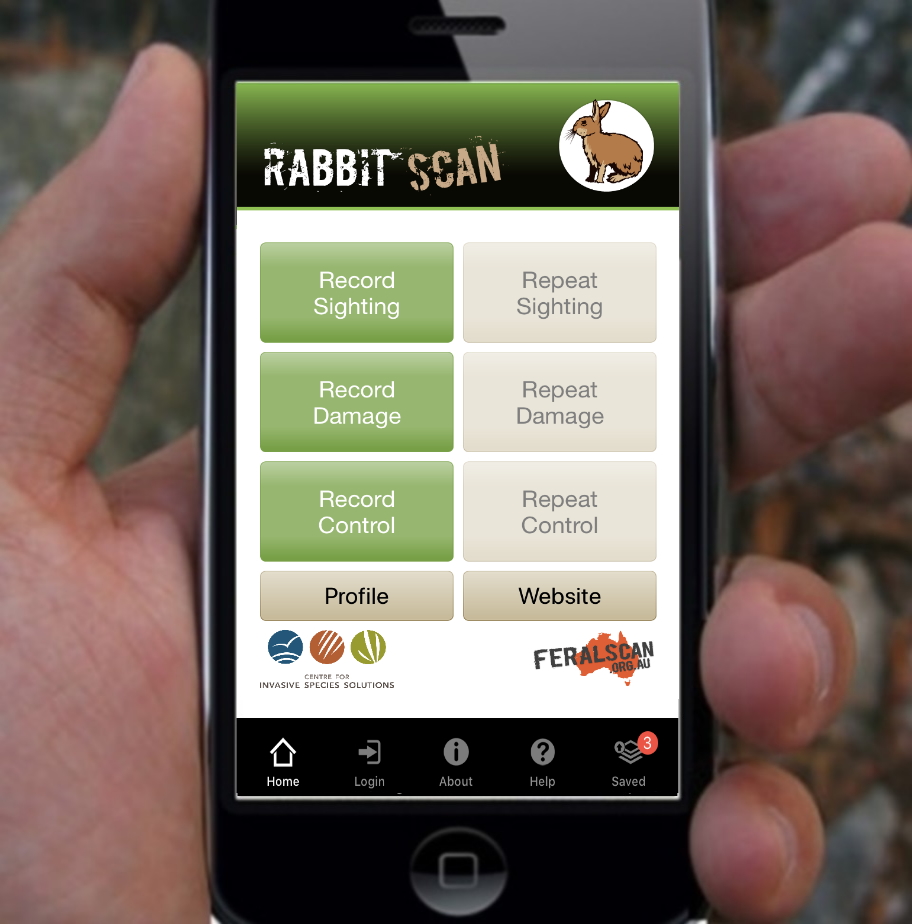Subscribe
Enter your email address to follow this blog and receive notifications of new posts by email.
Rabbit biocontrol programs have existed in Australia since the early 1950’s with the release of the Myxoma virus. When myxoma virus was released, it produced knockdowns of over 90 per cent of some rabbit populations in Australia and is considered one of the most successful biological control programs on a mammalian pest animal. But, as with most viruses, it became less effective over time due to rabbits developing genetic resistance.
Rabbit haemorrhagic disease virus (RHDV), also called calicivirus, is another biological control agent released in Australia in 1996 in another attempt to manage wild rabbits. It had some recorded success in arid zones and less impact in high rainfall areas.
There have been various strains of RHDV identified over the years. The newest release, RHDV1 K5, is a Korean variant of Rabbit Haemorrhagic Disease Virus (RHDV1). It was selected for its ability to overcome some of the limitations that begun to emerge with the original Czech strain of RHDV1.
Since the release in 2017, other viruses have been detected RHDV2 in the landscape which have become the dominate strain in Australia, significantly reducing the effectiveness of RHDV1 K5.
While there are many benefits to using biological control (in low numbered populations or populations that haven’t been exposed to the virus e.g Islands), Myxo and RHDV have also demonstrated that following initial impact of a new biological control, rabbit numbers eventually bounce back again. Biological control should not be considered a silver bullet. Land managers should continue to use an integrated and coordinated approach to manage rabbits, which includes a well-designed warren ripping component that is complemented by other control techniques.


To help you understand more about biological control in particular RHDV1 K5, we have answered some of the most common questions we receive. We hope it help’s you gain a better understanding of what biocontrol is and how to identify it when it is present in rabbit populations.
Once contracting the virus, rabbits develop ‘cold-like’ symptoms, become lethargic and then quickly die. Some rabbits show no visual symptoms, others may display a head titled back – like a stiff neck.
Different viruses have different visual symptoms.
The Myxoma virus causes myxomatosis, which is a generalised viral disease that kills European rabbits. Spread by biting insects, myxomatosis causes skin lesions, acute conjunctivitis around the eyes and swelling (pseudotumors) of the genital area. Myxomatosis ultimately compromises the rabbit’s immune system leading to respiratory infections that often lead to death.
Calici or RHDV, is a highly infectious and contagious disease of the European rabbit that is spread by flies and close contact with other infected rabbits. Rabbits infected with RHDV become feverish and display flu-like symptoms. Deceased animals infected with virus may display its head in a tilted back position. Internally, the liver often becomes discoloured/pale and the spleen may become swollen. There may be lesions in the trachea, lungs and kidneys. Death often occurs from disseminated intravascular coagulation and necrotic hepatitis.
You can look at the visual symptoms of the carcass to assess the disease type. Or if you find a dead feral rabbit that you suspect has died from a virus you can get some testing completed. To do this simply take a photo, record the details and preserve the rabbit in a clean sealed plastic bag, which is then sealed in a disposable airtight container or disposable bag and stored in a freezer. Sampling instructions will be provided to you.
You can request a sample kit via the Rabbitscan (https://www.feralscan.org.au/rabbitscan/).
RabbitScan is available as a smartphone and tablet app (iOS and Android) or the website can be accessed via your computer. If you have already downloaded the app, please make sure you update the app to have the latest version.
By submitting a rabbit tissue sample for testing, you are helping to map the spread of biocontrol agents in your local area. This information can be used to plan future coordinated control events and maximise the impact of rabbit biocontrol programs.
The use of RHDV1 K5 is not restricted, meaning it may be used and supplied to any person within Victoria. Agriculture Victoria do not keep records on where RHDV K5 is released throughout Victoria.
Disease detection information is available via the RabbitScan, where community members have reported disease sightings.
App: https://www.feralscan.org.au/rabbitscan/map.aspx?mapMode=rhdv
The information contained in this publication has been prepared with care and is based on knowledge and understanding at the time of writing (2023). Some of the information in this document is provided by third parties, and all information is provided “as is”, without warranty of any kind, to the extent permitted by law. After publication, circumstances may change and before relying on this information the user needs to take care to update as necessary.
Enter your email address to follow this blog and receive notifications of new posts by email.